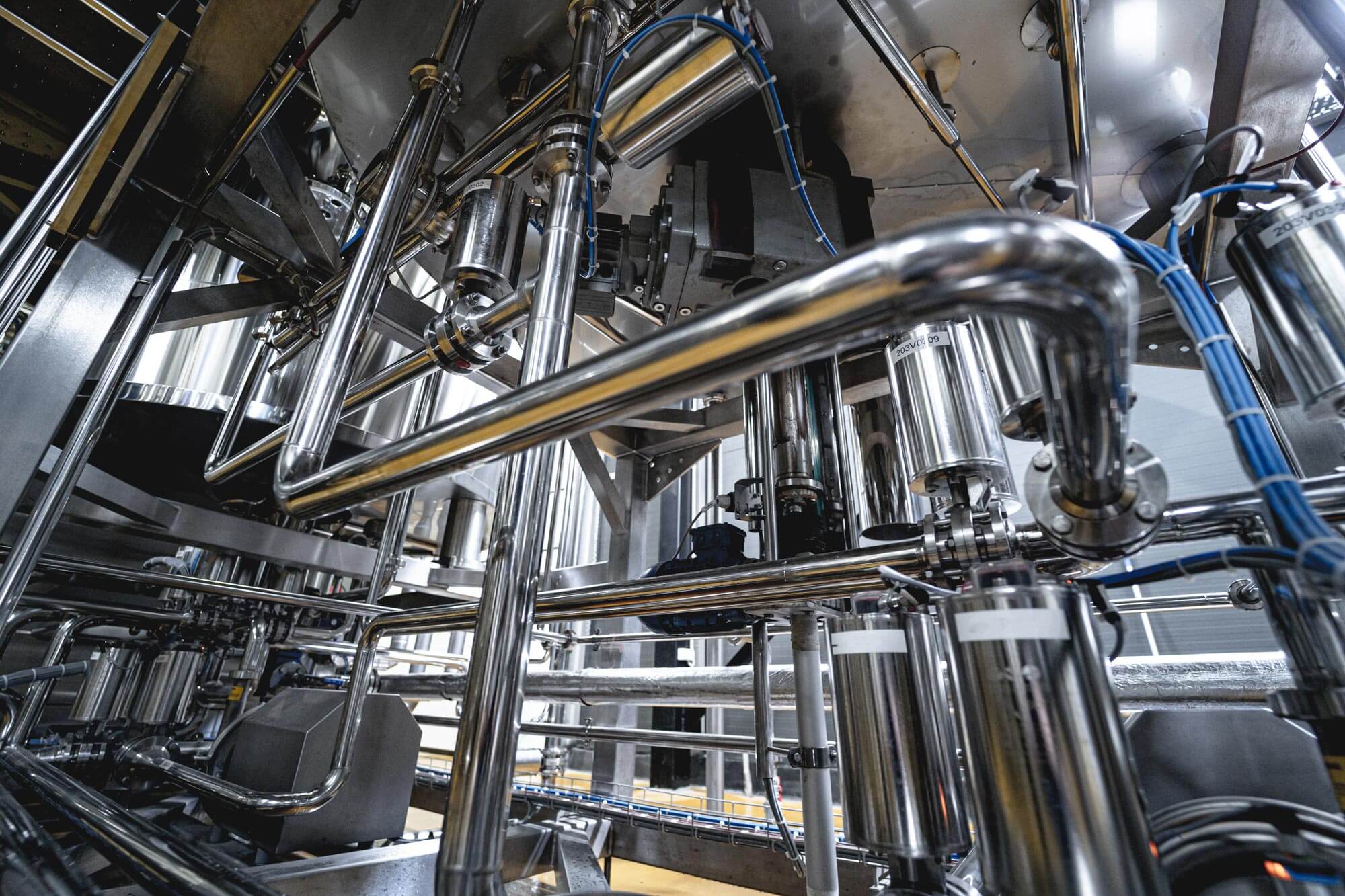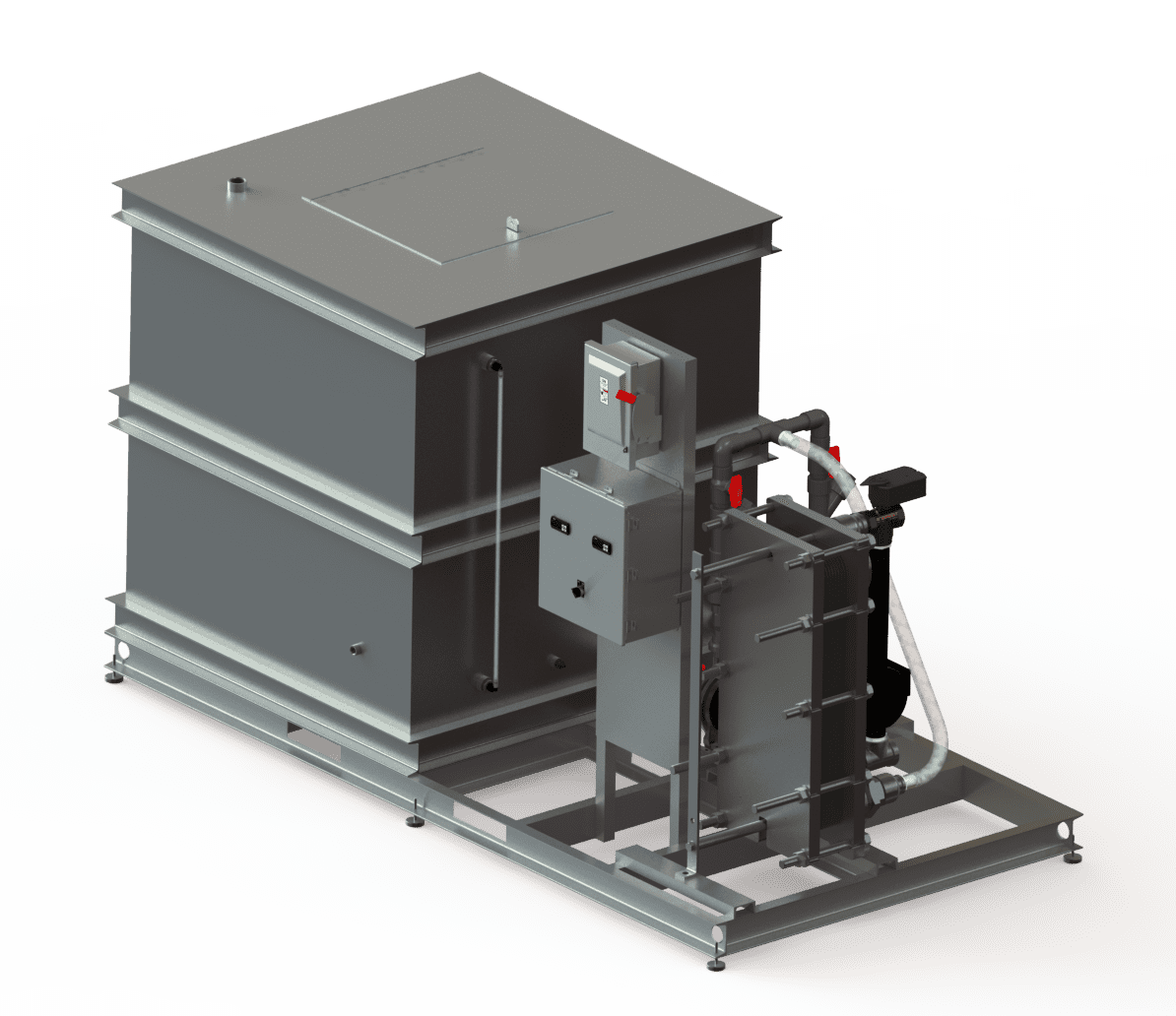How DVS Heat Transfer Systems Are Leading Sustainability Trends in Thermal Engineering
Wiki Article
Advancements in Heat Transfer Solutions: What You Need to Know for Ideal Efficiency
Innovations in Heat transfer systems are transforming efficiency throughout various industries. Advanced materials like graphene and nanofluids assure significant improvements in thermal conductivity. The assimilation of IoT and maker understanding supplies possibilities for real-time monitoring and boosted power efficiency. The landscape of thermal monitoring is quickly progressing. Recognizing these growths is important for achieving excellent system performance and sustainability in the future. What details innovations are forming this transformation?Arising Materials for Enhanced Heat Transfer

Advanced Heat Exchanger Styles
While conventional Heat exchangers have offered their objective in different applications, advanced designs are now emerging to meet the boosting needs for performance and performance. These ingenious designs, such as plate, shell-and-tube, and finned-tube Heat exchangers, incorporate boosted surface area areas and improved flow patterns to increase thermal transfer prices. On top of that, compact layouts permit minimized space demands without endangering performance. Advanced materials, such as compounds and corrosion-resistant alloys, additionally boost resilience and efficiency under severe problems. Simulation innovations and computational liquid dynamics are progressively employed to refine these layouts, ensuring peak Heat transfer features. As industries seek to minimize power usage and take full advantage of outcome, the fostering of sophisticated Heat exchanger designs is pivotal in attaining these goals.The Duty of Nanotechnology in Heat Transfer
Nanotechnology plays a necessary role in enhancing thermal conductivity within Heat transfer systems. By adjusting products at the nanoscale, scientists have achieved considerable renovations in power performance. These innovations not only optimize efficiency yet additionally add to even more lasting energy remedies.Enhanced Thermal Conductivity
Considerable innovations in thermal conductivity have emerged via the application of nanotechnology, changing Heat transfer systems across numerous industries. By including nanoparticles into Heat transfer fluids and products, scientists have actually accomplished remarkable rises in thermal conductivity. These nanoparticles, such as carbon nanotubes, graphene, and metal oxides, enhance the Heat transfer residential or commercial properties because of their high area and distinct thermal attributes. The resulting compounds display improved efficiency in applications ranging from electronic devices cooling systems to renewable resource modern technologies. Additionally, the capability to tailor the dimension, form, and make-up of nanoparticles enables optimized thermal management remedies. Because of this, nanotechnology proceeds to play a pivotal duty in the advancement of more reliable and reliable Heat transfer systems, paving the way for improved commercial applications.
Power Efficiency Improvements

Integration of IoT in Heat Transfer Systems
The combination of IoT in Heat transfer systems introduces the application of clever sensors that improve operational performance. These sensors allow real-time information tracking, enabling immediate modifications and optimizations. This technological advancement has the prospective to significantly boost performance and energy management in Heat transfer applications.Smart Sensors Execution
As Heat transfer systems evolve, the integration of clever sensing units with the Internet of Things (IoT) has become a transformative method. These sensing units allow real-time monitoring of stress, flow, and temperature level prices, improving system effectiveness and reliability. By gathering and transmitting data, they help with positive upkeep, minimizing the risk of system failures. Additionally, wise sensors contribute to power cost savings by refining functional parameters based upon environmental conditions. Their capacity to assess patterns and abnormalities enables for educated decision-making, guaranteeing peak performance of Heat transfer systems. As markets progressively adopt this technology, the execution of smart sensors stands to reinvent just how Heat transfer systems are handled, leading the way for greater sustainability and boosted efficiency outcomes.Real-Time Data Tracking
Exactly how can real-time information keeping track of enhance the efficiency of Heat transfer systems? By incorporating Net of Points (IoT) modern technology, Heat transfer systems can utilize constant information collection from clever sensing units. This real-time monitoring permits immediate evaluation of flow, stress, and temperature level rates, allowing drivers to determine inefficiencies promptly. Subsequently, changes can be made to optimize efficiency, lower power intake, and prolong equipment life-span. Furthermore, predictive upkeep can be applied, lessening unanticipated downtime and expensive fixings. The capacity to envision efficiency metrics through dashboards improves decision-making, cultivating an aggressive approach to system monitoring. Eventually, real-time data checking not just improves functional performance yet additionally adds to sustainability objectives within industrial procedures.Energy Performance and Sustainability Trends
Energy performance and sustainability trends are improving the landscape of Heat transfer systems, driving advancement and conformity across various markets. Organizations are progressively focusing on energy-efficient designs to lower functional expenses and decrease ecological influences. The assimilation of renewable resource sources is coming to be much more widespread, enabling Heat transfer systems to operate sustainably while fulfilling regulatory demands. Additionally, innovations in materials and innovations promote lower power usage and boost general efficiency. Lifecycle analyses are also getting traction, enabling firms to review the ecological influence of Heat transfer systems from manufacturing to disposal. This focus on sustainability not only supports business duty however additionally positions organizations competitively in a market where customers increasingly favor eco-friendly solutions. Energy efficiency and sustainability remain crucial considerations for future advancements in Heat transfer technology.Innovations in Thermal Administration Solutions
While the demand for effective Heat transfer proceeds to climb, technologies in thermal monitoring remedies are emerging to resolve both performance and sustainability challenges. Advanced products, such as stage change products and nanofluids, are being created to improve Heat transfer performance - DVS Heat Transfer Systems. These products enhance thermal conductivity and enable much better temperature law in various applications. Furthermore, innovations like energetic thermal control systems are gaining click over here grip, making it possible for real-time modifications to handle Heat flow properly. These systems contribute to energy financial savings and reduce the ecological impact of thermal processes. Additionally, the integration of IoT in thermal monitoring helps with tracking and anticipating maintenance, ensuring maximized efficiency and durability of Heat transfer systems. Overall, these advancements stand for considerable strides toward more sustainable thermal monitoring methodsFuture Instructions in Heat Transfer Innovation
Emerging developments in thermal administration remedies indicate a promising future for see it here Heat transfer modern technology. Researchers are significantly concentrating on creating materials with exceptional thermal conductivity and enhanced energy efficiency. Developments such as nanofluids, which include put on hold nanoparticles, use considerable renovations in Heat transfer performance. Furthermore, the combination of wise products that adapt to varying temperature level problems is getting traction, permitting even more efficient and responsive systems. The increase of additive production methods is likewise making it possible for the style of intricate Heat exchanger geometries that maximize liquid circulation. The implementation of equipment knowing algorithms is prepared for to reinvent the optimization of Heat transfer systems, promoting predictive maintenance and performance enhancement. Jointly, these innovations are positioned to transform the landscape of Heat transfer innovations in various markets.
Frequently Asked Inquiries

Just how Do I Select the Right Heat Transfer System for My Application?
Choosing the best Heat transfer system involves evaluating application needs, including temperature ranges, fluid buildings, and efficiency demands. Assessing system kinds, upkeep considerations, and cost-effectiveness also plays an essential duty in making a notified decision.What Are the Upkeep Requirements for Advanced Heat Exchangers?
Upkeep demands for sophisticated Heat exchangers typically include normal evaluations, keeping track of for leakages, cleaning of surfaces, and guaranteeing optimal flow rates. Complying with maker standards warranties effective operation and extends the devices's lifespan.
Just How Do Ecological Factors Affect Heat Transfer Effectiveness?
Environmental factors considerably influence Heat transfer performance. Variations in airflow, humidity, and temperature influence thermal conductivity and convective Heat transfer, inevitably affecting system efficiency and requiring factor to consider during the style and procedure of Heat transfer systems.What Safety Requirements Relate To Heat Transfer Systems?
Safety and security criteria for Heat transfer systems usually consist of standards from organizations such as ASME and ASTM. DVS Heat Transfer Systems. These standards address products, style, and operational techniques to assure integrity, efficiency, and defense versus risks in numerous applications
Just How Can I Fix Typical Heat Transfer System Issues?
Troubleshooting typical Heat transfer system concerns entails looking for leakages, making sure proper fluid flow, checking insulation integrity, and verifying temperature level differentials. Determining these factors can aid maintain system efficiency and stop further problems.Nanotechnology plays a necessary function in boosting thermal conductivity within Heat transfer systems. Significant advancements in thermal conductivity have actually emerged with the application of nanotechnology, changing Heat transfer systems throughout numerous sectors. Advancements in thermal conductivity with nanotechnology have paved the way for remarkable improvements in energy useful link effectiveness within Heat transfer systems. Energy performance and sustainability trends are reshaping the landscape of Heat transfer systems, driving advancement and compliance across different markets. The assimilation of IoT in thermal management promotes surveillance and predictive upkeep, guaranteeing optimized efficiency and durability of Heat transfer systems.
Report this wiki page